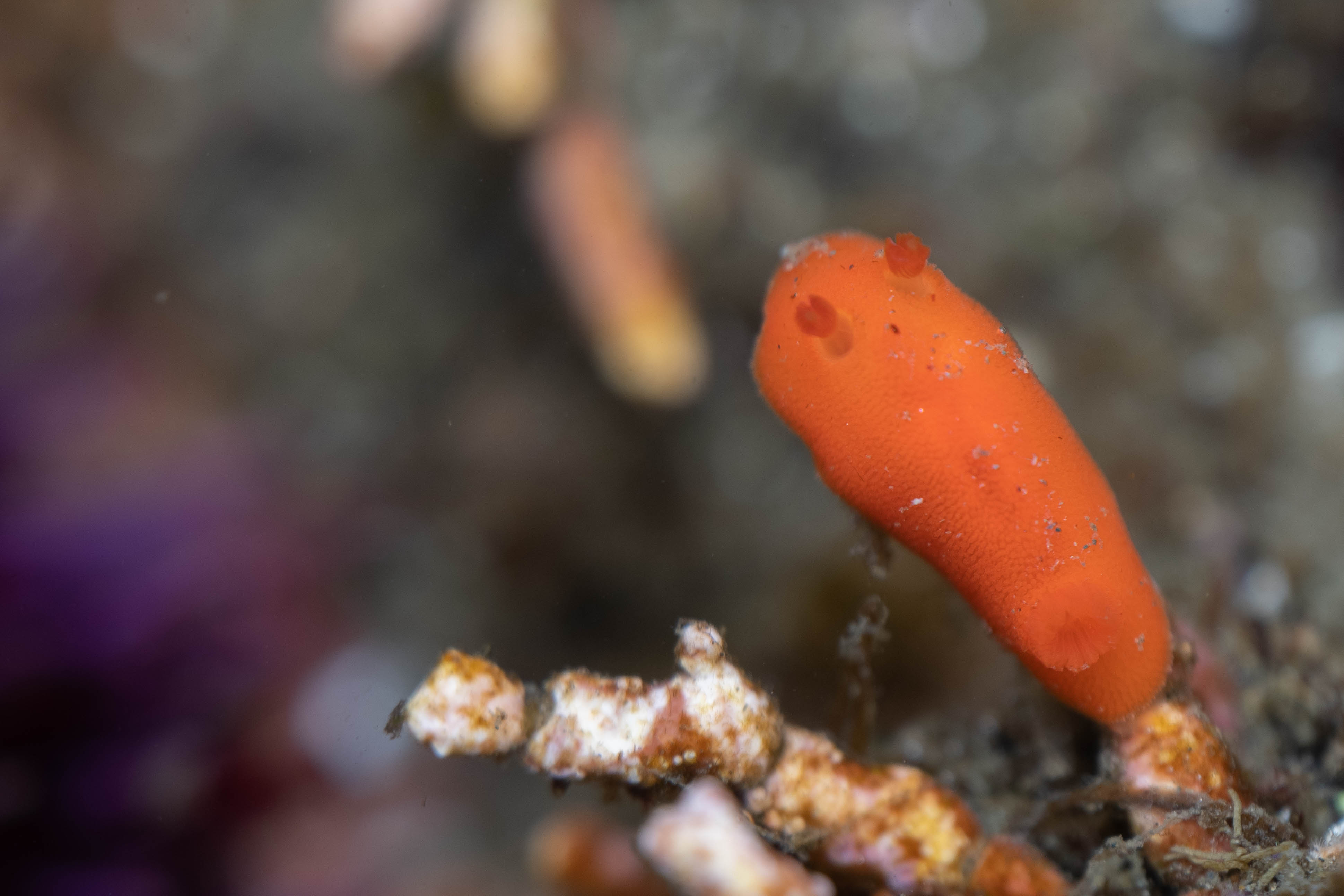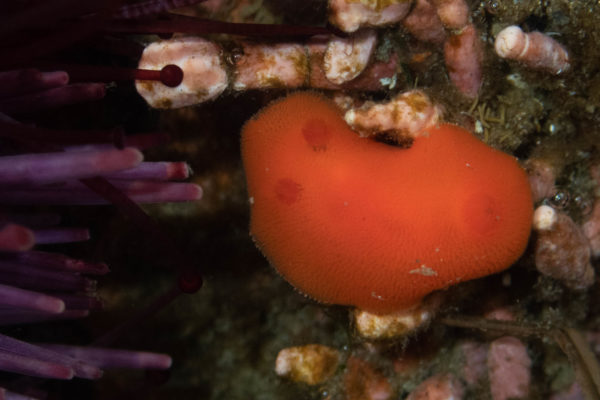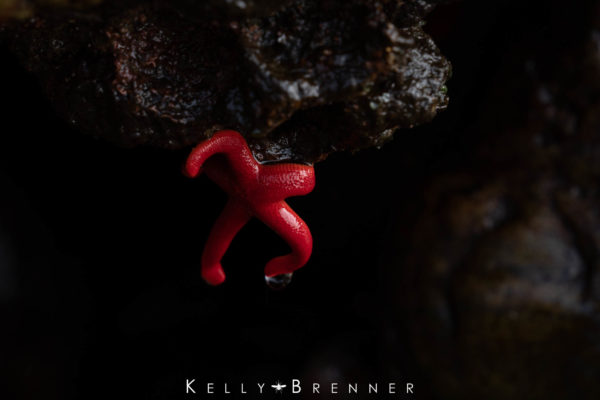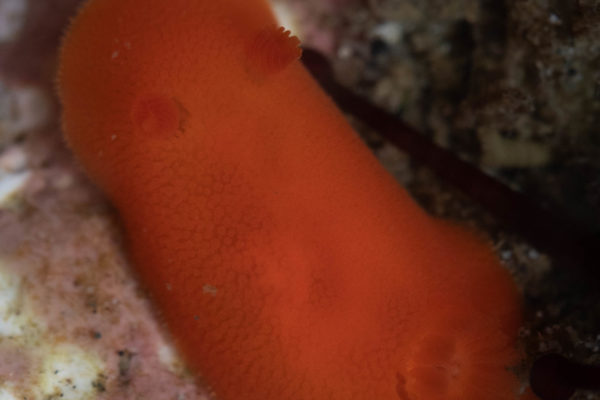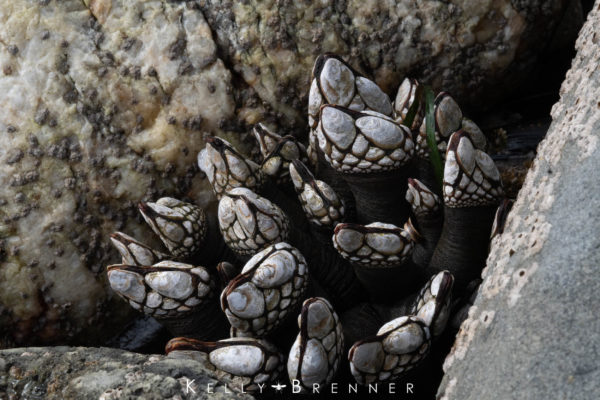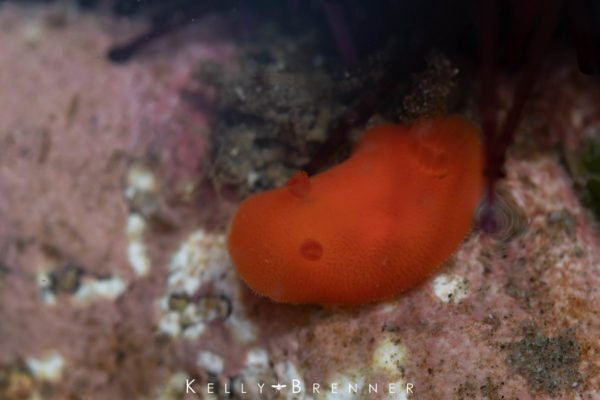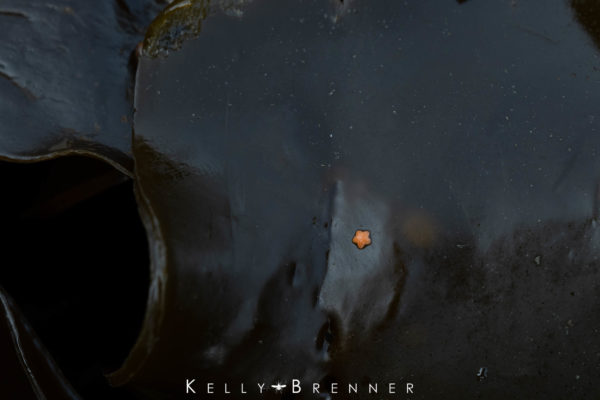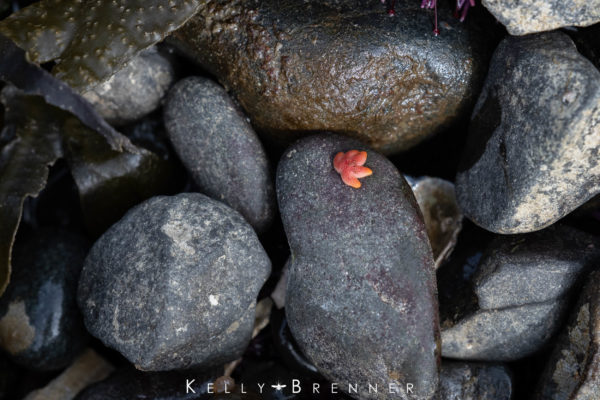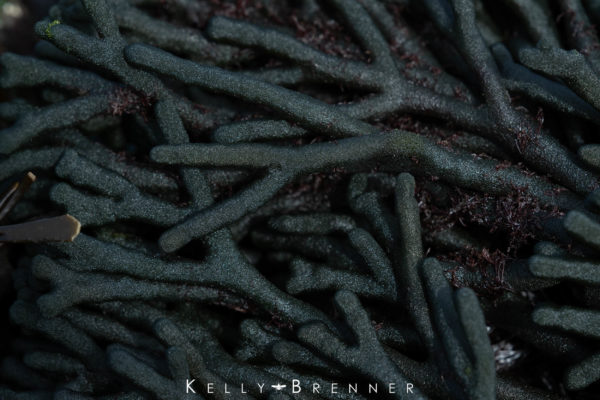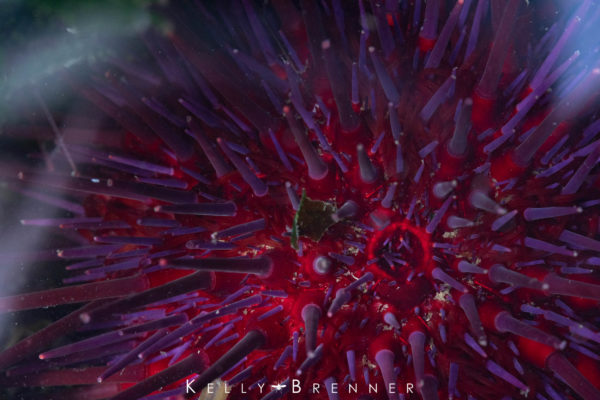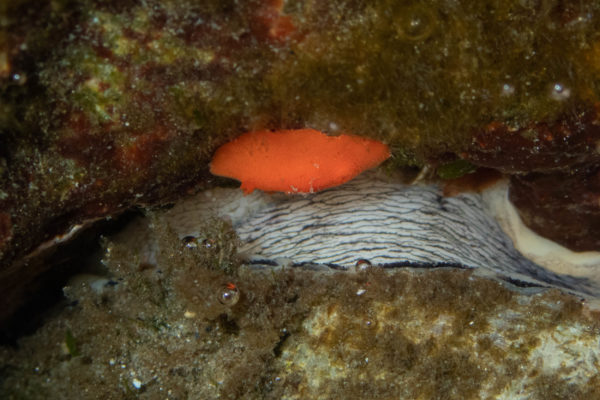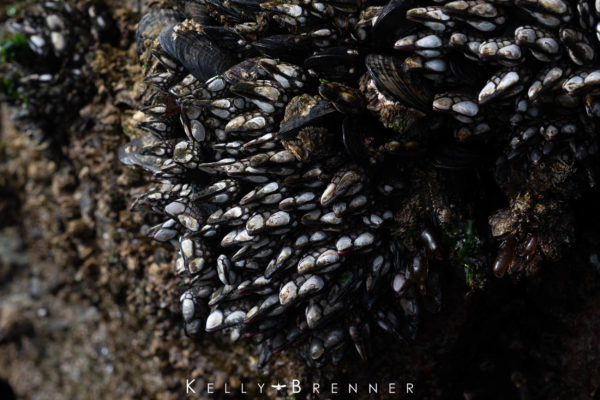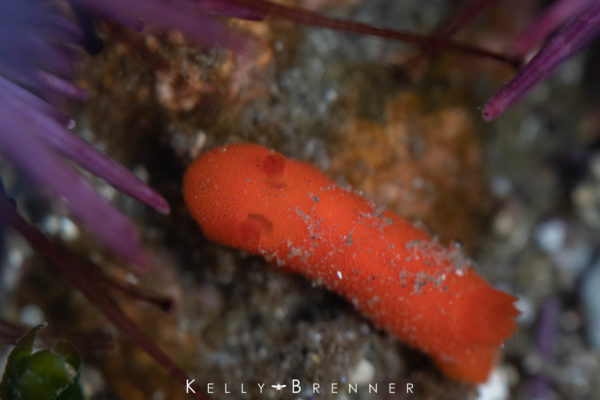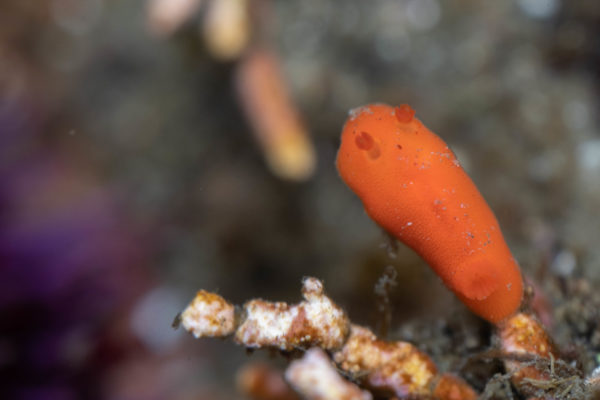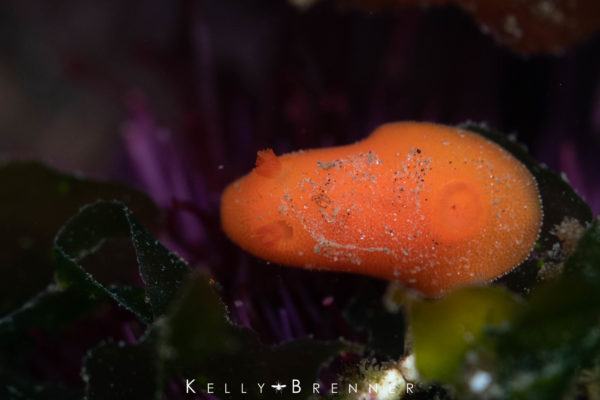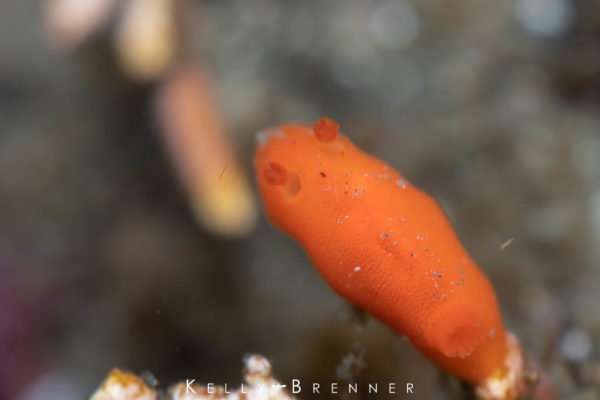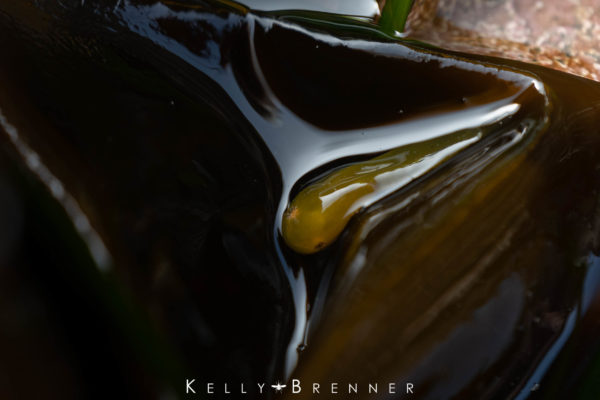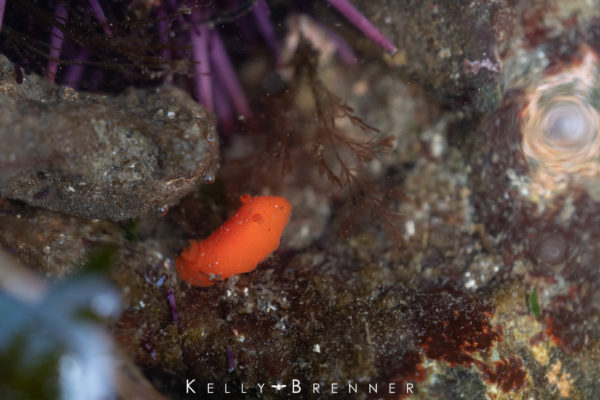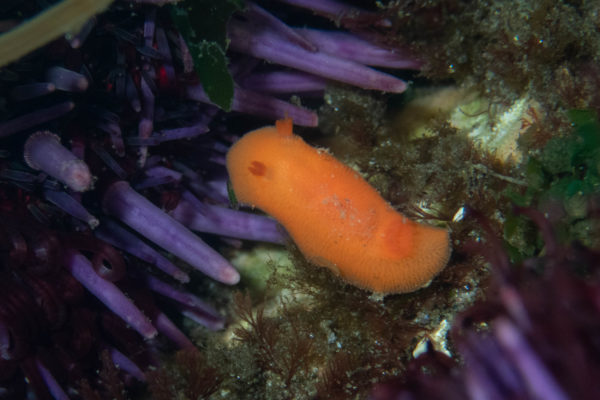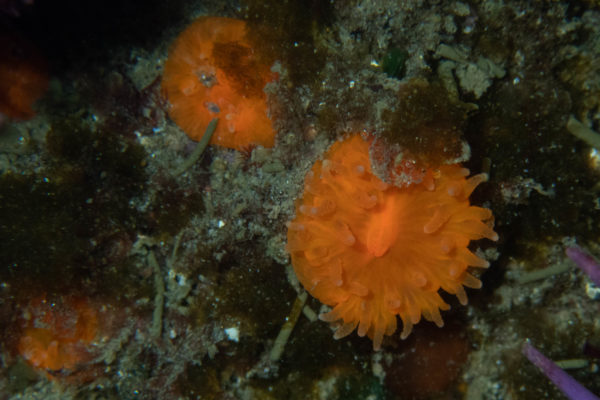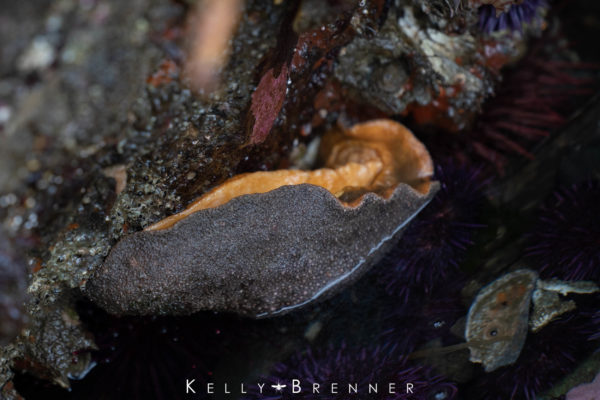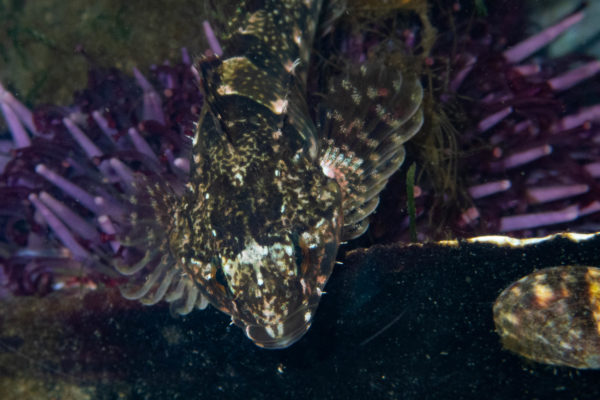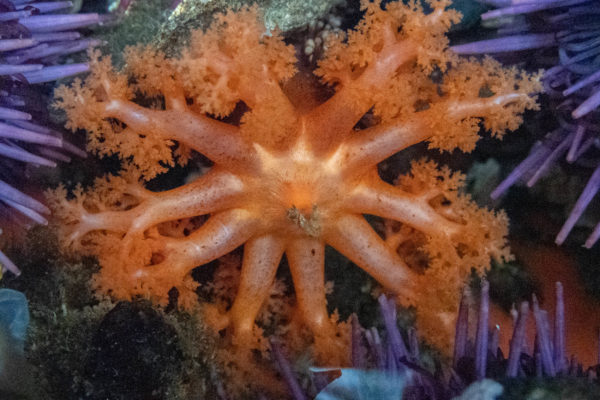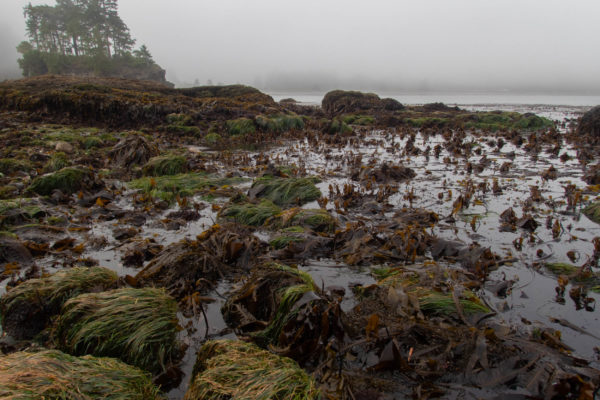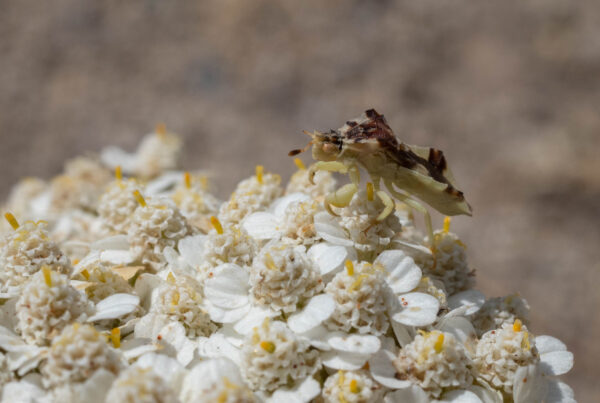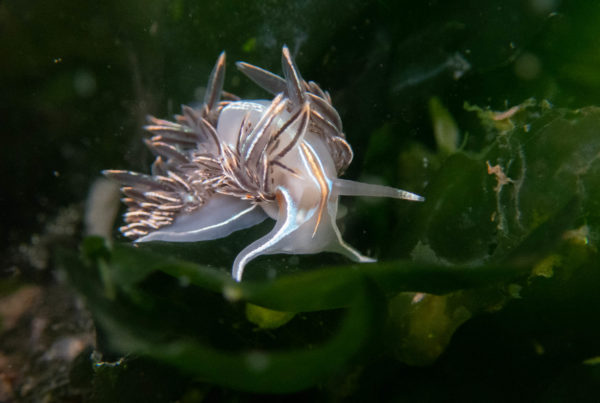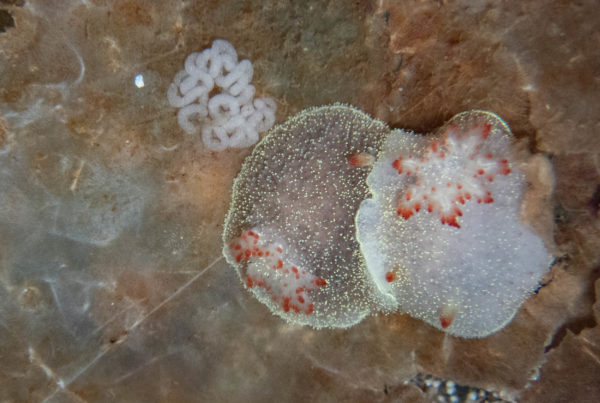Earlier this summer I made a pilgrimage to the Olympic Peninsula in search of nudibranchs. Low tide out on the Peninsula is different from here in Seattle, despite being on Puget Sound, so I had to get up absurdly early to make the three hour drive in time for the 8am low tide. Being the Pacific Northwest, even in summer the weather changes dramatically from one location to the next, and I started out with sun, but as soon as I hit Highway 101, I descended into a fog that didn’t lift again until I returned.
Tongue Point is at the Salt Creek Recreation Area near Port Angeles. Had the skies been clear, I could have seen Vancouver Island across the Straight of Juan de Fuca. But I didn’t need clear skies to survey the tidepools for marine life. And what tidepools there were! At low tide, dozens, if not hundreds, of tidepools are exposed at Tongue Point. It’s not a little overwhelming to begin to look.
I quickly noticed the size of things. The mussels covering the rocks were enormous in size, evidence that they are not harvested there. I soon found an ochre star that was the largest I’ve ever seen. When I placed my boot next to it, the sea star dwarfed it. Also on the rocks were some of my favorite marine organisms, goose barnacles. I rarely see them on the inner Puget Sound and I always get excited when I see them closer to the outer coast.
Further out towards the water, I discovered the pools covered in urchins. Three species fought for space in the pools where little else lived, the purple (Strongylocentrotus purpuratus), green (S. droebachiensis), and red (Mesocentrotus franciscanus) urchins. Because there are no sea otters in the Salish Sea, only on the outer coast, the sea urchins live largely free of predators. As a result, their populations explode and as they do, the sea weed diversity plummets. This was clear in the pools at Tongue Point where there was a massive lack of sea weed. I couldn’t help but compare the pools to Pillar Point, where people actively harvest sea urchins, and the pools are full of sea weed, which in turn are full of nudibranchs.
There were no nudibranch abundant pools at Tongue Point, but there were still nudibranchs to be found. I saw a Monterey Dorid (Doris montereyensis) and a Leopard Dorid (Diaulula odonoghuei), but there were not many others. With one exception. There were Red Dorids (Rostanga pulchra) absolutely everywhere. These are tiny nudibranchs, but their brilliant red makes them easy to spot. They are entirely red, from rhinophore to gill and the red color perfectly matches that of their food source, the red encrusting sponge. The little nudibranchs are adorable, their gills are very elegant and not as lacy as other dorids, and their rhinophores are unique and look like satellite dishes. I couldn’t help but take photos of nearly every one I encountered.
Other things I noticed were a good diversity of sea stars including ochre and blood stars and others I couldn’t identify. They ranged from the monstrous sized ochre star I mentioned earlier, to the teeniest baby star I’ve ever seen. I found one tiny sea star on a rock, only to encounter one even tinier a few steps later on a blade of kelp. It looks like a baking sprinkle. There were also a number of fish including sculpins and gunnels, but also the tiny tidepool snailfish.
It was definitely worth the trip and early morning and I hope to return before too long.

